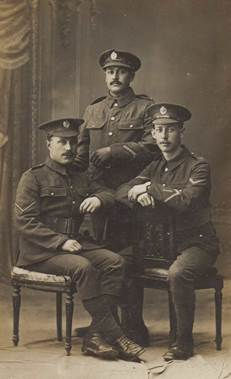
Figure 1. Great War Postcard Photograph of Three Men of the Royal Engineers.
38860 Acting Lance Corporal Albert L. Shelley, R.E., unknown, 89536 Acting Lance Corporal Leonard J. Cleminson, R.E.
(Image from the author’s collection)
89536
Acting Lance Corporal
LEONARD JAMES CLEMINSON
Royal
Engineers
By
Lieutenant Colonel Edward De Santis, MSCE, P.E.,
MinstRE
(March 2023)

Figure 1. Great War Postcard Photograph of Three Men of the
Royal Engineers.
38860 Acting Lance Corporal Albert L. Shelley,
R.E., unknown, 89536 Acting Lance Corporal Leonard J. Cleminson,
R.E.
(Image from the author’s collection)
1. INTRODUCTION
This research project was prompted by the author’s acquisition of the postcard photograph shown above. The postcard has the names of two of the individuals in the photograph printed neatly in pencil on the reverse side as shown here:
BERT SHELLEY
LEN CLEMINSON
Len Cleminson was identified as Acting Lance Corporal Leonard James Cleminson, R.E.[1] Cleminson’s service papers were found on Ancestry.com and from their contents he was identified as the man seated on the right because of his Good Conduct Badge and the Wound Stripe on his left arm. The man seated on the left is thought to be 38860 Driver Albert (“Bert”) Shelley, R.E.[2] The man who is shown standing in the photograph is not identified, however, from the unusual design on his Good Conduct Badge it is known that he served in a Royal Engineers Tunnelling Company.
Other than the two names written in pencil on the back side of the postcard, no other information is written there; that is, it was never used and posted to anyone. The postcard does show the words Carte Postale indicating that perhaps it was printed in France. In the photograph, Cleminson is wearing a Wound Badge (awarded on 29 September 1915), a Good Conduct Badge (awarded on 6 April 1917) and Lance Corporal stripes (awarded on 25 January 1918).[3] The dates shown are the dates that he qualified for these badges and insignia and are not necessarily the dates coinciding with when he was issued the badges.
Shelley was identified in Figure 1 when a second postcard photograph of the two men was found on the internet. This second photograph was taken of them sometime between February 1916 and June 1919 when they were serving in Egypt.
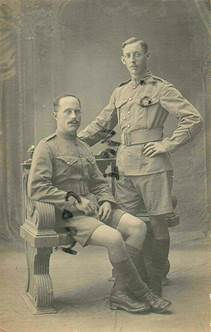
Figure 2. Len Cleminson and Bert Shelley in Egypt.
(Image
from piclick.co.uk)
The names of the two men are written on the back of the postcard in Figure 2 in the same manner as they were written on the postcard in Figure 1. The man standing in Figure 2 is obviously Lance Corporal Cleminson, although he is not wearing the chevrons of a Lance Corporal. The reason for this is that he went to Egypt as a Sapper and was appointed an “Acting” Lance Corporal the first time in January 1918. He reverted to the rank of Sapper in February 1918 and was again appointed an “Acting” Lance Corporal in May 1919, an acting rank which he held until his discharge in July 1919.
The resemblance of the man seated in Figure 2 and the man seated on the left in Figure 1 is readily apparent. Although the photograph was taken in Egypt it still has Carte POSTALE imprinted on the reverse side. These two French words appear on many photograph postcards produced for British soldiers during the Great War and apparently do not necessarily indicate that the photograph was taken in France.
The remainder of this work will describe primarily the life and military service of Leonard Cleminson, although a considerable amount of information also will be presented concerning Cleminson’s brother who served in the East Yorkshire Regiment and who was killed in action. References to information presented herein can be found in notes at the end of the narrative. Where no citations are shown, the reader should assume that the information was taken from one of the Cleminson’s military service papers.
2. FAMILY INFORMATION AND EARLY LIFE
Family Information
Leonard James Cleminson was the son of James Cleminson (1869-1938) and Laura Jane Cleminson, née Pannifer (1868-1915), both of Stratford, Essex.[4] James and Laura Jane had been married in West Ham, Essex in June 1891.[5] In addition to Leonard, the Cleminsons had three additional children: Albert Edward (1895-1917), Florence Lily (1897-1935) and Dorothy May (1900-1969).
|
|
Figure 3. James Cleminson. |
Figure 4. Laura Jane Cleminson, née Pannifer. |
Early Life
Leonard was born on 16 June 1892 in Stratford. He lived with his parents and worked in his father’s business until he joined the Army in 1915. The 1901 Census of England (31 March 1901) and the 1911 Census of England and Wales (2 April 1911) show the composition of the Cleminson family on those dates.
1901 Census of England
Census Place: 64 Chobham Road, West Ham, Essex. |
|||||
Name and Surname of each Person |
Relation |
Marital Status |
Age |
Profession or Occupation |
Birthplace |
James Cleminson |
Head |
Married |
33 |
House Painter & Paper Hanger |
Stratford, |
Laura J. Cleminson |
Wife |
Married |
32 |
|
Stratford, |
Leonard J. Cleminson |
Son |
|
8 |
|
Stratford, |
Albert E. Clemenson |
Son |
|
6 |
|
Stratford, |
Florence L. Cleminson |
Daughter |
|
4 |
|
Stratford, |
Dorothy M. Cleminson |
Daughter |
|
4 mos |
|
Stratford, |
TABLE NOTE: The family trees show that
Laura Cleminson was born in 1868 and that James Cleminson was born in
1869, yet in the census above James is shown to be one year older
than Laura.
1911 Census of England and Wales
Census Place: 64 Chobham Road, West Ham, Essex. |
|||||
Name and Surname of each Person |
Relation |
Marital Status |
Age |
Profession or Occupation |
Birthplace |
James Cleminson |
Head |
Married |
43 |
General House Repairer |
Stratford, |
Laura Jane Cleminson |
Wife |
Married |
42 |
|
Stratford, |
Leonard James Cleminson |
Son |
Single |
18 |
Paperhanger |
Stratford, |
Albert Edward Cleminson |
Son |
Single |
16 |
Clerk |
Stratford, |
Florence Lily Cleminson |
Daughter |
|
14 |
School |
Stratford, |
Dorothy May Cleminson |
Daughter |
|
10 |
School |
Stratford, |
TABLE NOTE: The same 1-year
discrepancy between the census and the family trees is noted in the
ages of James and Laura Jane.
Figure 5. The Cleminson Residence at 64 Chobham Road, West Ham.(Image courtesy of Google Earth) |
Figure 6. The Residence of Richard Cleminson at 125 Sherrard Road, Forest Gate.(Image courtesy of Google Earth) |
NOTE: The building at 64 Chobham Road is the tan brick building shown in Figure 5. At the time that this photograph was taken the entrance to the building was no longer on Chobham Road but on Brydges Road.
In 1911 Leonard was working in the business of his father and uncle, J. & R. Cleminson, Painters, Decorators and General House Repairers. The addresses of the firm were 64 Chobham Road, Stratford E. (the home of James Cleminson) and 125 Sherrard Road, Forest Gate, E. (the home of Richard Cleminson). Richard Cleminson (1871-?) was Leonard’s uncle.
2. PHYSICAL DESCRIPTION
The following is a description of Leonard James Cleminson based on a medical examination, performed on 6 April 1915, when he was preparing to enlist in the Army:
Apparent age: |
22 years |
Trade: |
Painter and decorator (1) |
Height: |
5 feet 6-1/8 inches |
Weight: |
125 pounds |
Chest fully expanded: |
36½ inches |
Range of expansion: |
2½ inches |
Physical development: |
Good |
Vaccination marks: |
Left arm – 1 from infancy |
Vision: |
R.E. 6/6. L.E. 6/6 (2) |
Marks of congenital peculiarities: |
None |
Slight defects: |
Loss of four teeth, has good dentures |
Distinctive marks: |
None |
Religion: |
Wesleyan (3) |
TABLE NOTES:
His civil trade as a painter and decorator was one of the factors that enabled him to enlist in the Royal Engineers, as the trade of Painter was one of the military trades needed in the Corps.
The vision notations are based on the use of the Snellen Visual Acuity Test. A Snellen test usually consists of a number of rows of letters which get smaller as one reads down the chart. On the Snellen scale, normal visual acuity is called 6 / 6, which corresponds to the bottom or second bottom line of the chart.
For some strange reason the recruit’s religion was always included in his physical description after a medical examination.
Based on the results of his medical examination Cleminson was placed in Medical Category A1, which meant that he was fit for dispatching overseas, as regards his physical and mental health, and his training.
3. RECRUITMENT, ENLISTMENT AND TRAINING
Recruitment
Leonard expressed a strong desire to join the forces in April 1915 when the Great War was in its eighth month. His father wrote a letter on his company letterhead, dated 7 April 1915, to the Recruiting Officer in Stratford stating:
This is to certify that my son Leonard James Clemson has been working for us in the General House Repairing as a Painter, etc. since leaving school about 8 years ago.
Yours Faithfully
Jas Cleminson
It would seem that the purpose of this letter was to verify that in fact Leonard had been a painter for some time and that he was qualified to join the forces, specifically the Corps of Royal Engineers. Certainly this letter had its desired effect and the Recruiting Officer surely jumped for joy and began processing Leonard’s enlistment.
Enlistment
Leonard Cleminson enlisted in the Army at Stratford on 7 April 1915. His was to be a Short Service Attestation for the duration of the war. As with all recruits he was required to respond to a number of questions put to him by the Recruiting Officer. He gave the following responses to these questions. Cleminson indicated that his address at the time was 64 Chobham Road, Stratford, London and that he was 22 years of age. He was a Painter and Decorator by trade and was not married. He claimed to have had no prior naval or military service, that he was willing to be vaccinated and that he was enlisting for General Service. His Attestation was certified on 7 April and was designated 89356 Sapper Leonard James Cleminson, R.E.
Training
Following the administrative actions involved with his enlistment, Cleminson was sent off for his recruit training to the School of Military Engineering at Chatham, Kent. His attestation was approved there on 16 April 1915 by the Officer Commanding Royal Engineers Depot Companies. At Chatham he was trained in infantry drill and pioneer duties. He also received musketry training. When the course of training was completed he had to pass an examination and was then transferred to an engineer formation, where he would receive higher pay and could earn extra allowances by working at his special trade. During the Great War the training cycle was shortened to about eight weeks before the man was posted to a field unit. Cleminson was designated a “Proficient” Painter at the completion of this training and before he was posted to his unit.
4. POSTINGS, ASSIGNMENTS AND CAMPAIGN SERVICE
France and Flanders (1915)
On 8 August 1915, after completing his recruit training, Sapper Cleminson was posted to the 138th Fortress Company at Buxton, Derbyshire. The company was commanded by Captain John Palgrave Heathcote Ouchterlony, R.E.[6]
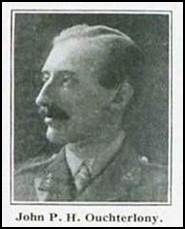
Figure 7. Captain John Palgrave Heathcote Ouchterlony, R.E.
(Image from De Ruvigny’s Roll of Honour 1914-1919)
The company was alerted for service in France in early August 1915 and at 10:35 pm on 8 August it entrained at Buxton for Southampton where it arrived the following morning. At 4:30 pm on 9 August the company embarked aboard S.S. Northwestern Miller.[7]
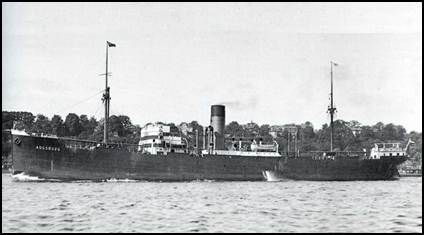
Figure 8. S.S. Northwestern Miller.
(Image courtesy of Wikipedia)
The following is a transcription of the 138th Company’s official War Diary during the period that Cleminson served in the unit. Comments in brackets [ ] have been added by the author.
|
|
|
|
BUXTON |
8/8/15 |
10:35 pm |
Entrained at Buxton for Southampton |
SOUTHAMPTON |
9/8/15 |
8:30 am |
Arrive Southampton |
“ |
|
4:30 pm |
Embarked on S.S. Northwestern Miller |
HAVRE [with the Second Army] |
10/8/15 |
8:00 pm |
Arrived HAVRE. Marched to No. 5 Camp. Inspected by Camp Commandant |
“ |
11/8/15 |
3:15 pm |
Entrained at HAVRE for FOUQUEREIL |
LA BUISSIERE |
12/8/15 |
9:00 am |
Arrived at FOUQUEREIL at 9 am and marched to billets at LA BUISSIERE |
“ |
13/8/15 |
|
Marched during the night 13/14 from LA BUISSIERE to billets at ANNEQUIN |
ANNEQUIN [Working in the British I Corps area] |
14/8/15 to 26/8/15 |
|
Company working on GRENAY LINE defences and ANNEQUIN. Infantry working party provided as follows – 15/8-18/8 5th Sussex Regt. 19/8 – 25/8 6th London Regt. |
“ |
17/8/15 |
|
Name of company changed from FORTRESS to ARMY TROOPS |
“ |
19/8/15 |
|
Sapper Jones admitted to hospital with eczema |
“ |
26/8/15 |
|
GRENAY LINE from CAMBRIN to NOYELLES – PHILOSOPH Road inspected by C.E. 1st Corps. Company marched on night 26/27 to billets at MAZINGARBE. Sapper Ross admitted to hospital – injuries from fall |
MAZINGARBE |
27/8/15 |
9:00 am |
Received orders from C.E. to suspend work on GRENAY LINE |
|
|||
|
|
|
|
MAZINGARBE |
27/8/18 |
|
Company worked at disposal of G.O.C. No. 1 Group for construction of emplacements, shelters, etc., for 13th and 19th Siege Batteries. Sapper Mayes admitted to hospital with tonsilitis. |
“ |
28/8/15 |
|
Company at work on 2 shelters, 2 cartridge recesses and 2 ‘lean to’ artilleries shops for 13th Siege Battery. Received orders to place half the company at disposal of CRE 47th Div. from night of 29/30. |
“ |
29/8/15 to 31/8/15 |
|
Right half company less carpenters employed with infantry working [?] on communication trench to W3 section. Remainder of company on shelters for 13th Siege Battery and erection of overhead cover for guns of 19th Siege Battery |
“ |
30/8/1915 |
|
Sapper Brown admitted to hospital with scabies. Sapper Robinson, E.D. admitted to hospital with strain. Driver Woodman, ASC admitted to hospital. Disease unknown. |
“ |
31/8/1915 |
|
Two motor lorries received from O.C. 15th Divl. Supply Column Sappers Jones and Ross rejoined company from hospital |
J.P.H. Ouchterlony Capt., R.E. O.C. 138th A.T. Co. R.E. |
|||
|
|||
|
|
|
|
MAZINGARBE |
1/9/15 to 5/9/15 |
|
Company at work on overhead shelters for guns of 19th Siege Battery and shelters and observation posts for 13th Siege Battery |
“ |
2/9/15 |
|
Driver Woodman ASC discharged from hospital |
“ |
3/9/15 |
|
Sapper Brown, M discharged from hospital |
“ |
4/9/15 |
|
Driver Mathers admitted to hospital with dysentery |
“ |
5/9/15 |
|
Corporal Tarrant admitted to hospital with scabies Sapper Cleaver admitted to hospital with dysentery |
“ |
6/9/15 to 21/9/15 |
|
Right half company on roadmaking under O.C. 25th A.T. Co. R.E. |
“ |
6/9/15 to 15/9/15 |
|
Left half of company completing work for 13th and 19th Siege Batteries on 6th , 7th and 8th. Repairs to mine railways 9th to 15th |
“ |
16/9/15 to 18/9/15 |
|
Left half company widened level crossing at BULLY-LES-MINES station |
“ |
19/9/15 to 21/9/15 |
|
Left half company on bomb proof shelters for the company |
“ |
21/9/15 |
|
One section on deviation road for 47th Div near MAZINGARBE chateau |
“ |
6/9/15 |
|
Sapper Mayes discharged from hospital |
“ |
9/9/15 |
|
Sapper Robinson, E.D. & Driver Mathers discharged from hospital. |
“ |
10/9/15 |
|
Sapper Jones admitted to hospital with bronchitis |
|
|||
|
|
|
|
MAZINGARBE |
11/9/15 |
|
Sapper Brown, M. admitted to hospital (undiagnosed) |
“ |
12/9/15 |
|
Sergeant McVie admitted to hospital with rheumatism Sapper Robertson admitted to hospital with sciatica |
“ |
13/9/15 |
|
Sapper Jones discharged from hospital |
“ |
14/9/15 |
|
Sapper Brown, M. discharged from hospital Sapper Robertson, S. discharged from hospital |
“ |
18/9/15 |
|
Capt Ouchterlony and 2nd Lieut Mellor proceeded to G.H.Q. for instruction in new span bridges, returning same day |
“ |
22/9/15 to 24/9/15 |
|
Company preparing cavalry tracks Nos. 4, 5, 6, 7 and 8 from line NOEUX LES MINES-SAILLY LA BOURSE to BULLY-LES MINES-VERMELLES railway. Work completed including 18 bridges at 6 pm on 24/9/15. |
“ [with the British IV Corps for the Battle of Loos] |
25/9/15 to 26/9/15 |
|
Standing by awaiting orders. Assisted R.A.M.C. as much as possible |
“ |
27/9/15 |
11:00 am |
Received orders from C.E. to repair holes in deviation road near MAZINGARBE chateau. Holes filled and all bad parts re-surfaced by 5:00 pm |
|
|
4:15 pm |
Received orders from C.E. to repair roads E of PHILOSOPHE. Company worked by night, cleared dead animals, carts, etc., filled shell holes and trenches |
|
|||
|
|
|
|
MAZINGARBE |
27/9/15 continued |
|
where necessary and buried men left on the road from VERMELLES station (G 20 a 17) to cross roads at G 34 B 31, and thence along HARROW road to our front line trenches in G 33 D (Trench Map 1/10000). |
“ |
28/9/15 |
|
A few minor repairs to roads carried out |
“ |
29/9/15 |
|
Work as yesterday. Sapper Cleminson wounded by shell fire |
“ |
30/9/15 |
|
Road repairs |
J.P.H. Ouchterlony Capt., R.E. O.C. 138th A.T. Co. R.E. |
|||
The entry for 27 September describing the work being done by the company must have been upsetting to Cleminson and other men of the unit who were given this task. The horrors of war surely came through to them on that day when they had to clear the road and bury men who had been left on the road, killed during the opening days of the Battle of Loos.
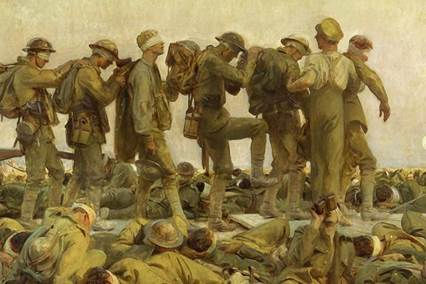
Figure 9. On a Road During the Battle of Loos.
(Image courtesy of Wikipedia)
The Battle of Loos took place from 25 September to 8 October 1915. It was the biggest British attack of 1915, the first time that the British used poison gas, and the first mass engagement of New Army units. The French and British tried to break through the German defences in Artois and Champagne and restore a war of movement. Despite improved methods, more ammunition and better equipment, the Germans largely contained the Franco-British attacks, except for local losses of ground. The British gas attack failed to neutralize the defenders and the artillery bombardment was too short to destroy the barbed wire or machine gun nests. German tactical defensive proficiency was still dramatically superior to the British offensive planning and doctrine, resulting in a British defeat.[8]
Shrapnel produced a 2-inch wound in Cleminson’s jaw below his left ear, causing deafness in that ear. He was taken to No. 23 General Hospital at Etaples for immediate treatment. An operation was performed to remove shrapnel fragments from his face and on 4 October 1915 he was evacuated to England aboard H.M.S. Dieppe.[9] Based on the War Diary entries, Cleminson was the first casualty the company suffered by enemy action.
Home (1915-1916)
On 5 October 1915 Sapper Cleminson was admitted to the Edinburgh War Hospital in Bangour, situated 14 miles from Edinburgh in the hilly woodlands near Broxburn. In 1915 Bangour Village Hospital had been taken over by the War Office as a military hospital. Its civilian patients were transferred to asylums around the country. The numbers of staff and beds were increased substantially to cater for the influx of wounded soldiers who began to arrive in June of that year. By 1918 the hospital would reach a record capacity of 3000 patients, crammed into wards, huts and specially erected marquees.
Cleminson was treated for the shrapnel wound in his jaw and head. He remained in the hospital for 61 days. His medical records are somewhat confusing with regard to his wound. Some entries called it a gunshot wound where other entries in his records indicate that it was a shrapnel wound. It most likely was a shrapnel wound caused by German shelling of Cleminson’s road repair party at Mazingarbe during the Battle of Loos.
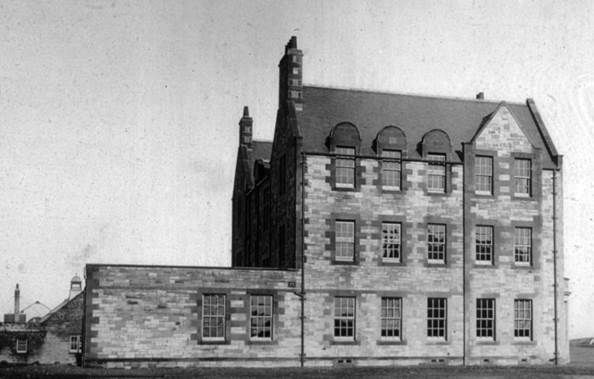
Figure 10. Edinburgh War Hospital, Bangour, Scotland.
(Image
courtesy of Wikipedia)
Egypt (1916-1919)
After being discharged from the hospital on 4 December 1915 Cleminson was given some days of medical leave to recuperate from his surgery and he was posted temporarily to the Royal Engineers Training Center in Newark in Nottinghamshire. On 1 February 1916 he was transferred to the 13th Base Park Company, which at the time was in Alexandria, Egypt. The company had arrived in Egypt from Mudros on 29 January 1916, having come from the battlefield at Gallipoli. It established a Base Park at Sidi Bishr in Alexandria under the command of Lieutenant W.M. Jennings, R.E. on 18 February.
Sapper Cleminson arrived in Egypt on 8 March 1916 with a Reinforcement from England and joined the 13th Base Park Company on 24 May. At that time the company was employed moving stores by ship and rail and providing workshop facilities at Alexandria. The company was assisted using working parties from the Egyptian Labour Corps. On 6 April 1917, with exactly two years of service, Sapper Cleminson was awarded his first Good Conduct Badge.
Captain D.A. Law, R.E. replaced Lieutenant Jennings as the commander of the 13th Base Park Company in October 1917. He in turn was replaced as the O.C. by Major W.E. Francis, R.E., on 19 November 1917.
Cleminson was appointed an Acting Lance Corporal (paid) on 25 January 1918, but he reverted to his permanent rank of Sapper on 26 February. On 25 March his Trade rating was raised from “Proficient” Painter, with extra pay amounting to 1 shilling per day, to “Skilled” Painter with an extra 1 shilling and 4 pence per day. His War Pay also was increased to 3 pence per day on 7 April 1918 and on 1 February 1919 he became eligible for a full Bonus of 4 pence per day.
Following the end of the war and in preparation for discharge, Cleminson was given a medical examination in Alexandria on 3 May 1919. As a result of the examination it was determined that he was “very deaf in left ear, right ear normal,” undoubtedly due to his wound. On 12 May he was again appointed to the acting rank of Acting Lance Corporal (paid). This appointment was probably due to the need for junior non-commissioned officers to assist in preparing the company for its return to the UK and demobilization. Cleminson was admitted to hospital in Alexandria on 6 June 1919 for an undisclosed ailment. He rejoined the 13th Base Park Company on 14 June and on 20 June he embarked for home at Port Said.
Discharge
Cleminson was demobilized at Purfleet, Essex on 6 July 1919. On 2 August 1919 he was transferred to the Class “Z” Army Reserve and he returned to civil life to work with his father’s and uncle’s house repair and decorating business in Stratford.
The following sections are presented in tabular form to summarize Cleminson’s promotions, appointments, military training and qualifications and the medals that he was awarded during his time in the Army. They are provided to give the reader easy access to these aspects of his military service. The tables are followed by sections dealing with his marriage, personal information and post service life.
5. APPOINTMENTS
Leonard Cleminson never received any promotions during his time in service, but he was appointed twice to the acting rank of a junior non-commissioned officer and received the pay for that rank. His Protection Certificate and Certificate of Identity (Army Form E. 11), prepared for his discharge, indicates that he was a Lance Corporal when he was transferred to the Class “Z” Reserve. He is shown wearing Lance Corporal stripes in Figure 1 at the beginning of this narrative, indicating that the photograph must have been taken in early 1918 or after the middle of May 1919.
Date of Appointment |
|
25 January 1918 |
Appointed Acting Lance Corporal. |
26 February 1918 |
Reverted to the rank of Sapper. |
12 May 1919 |
Appointed Acting Lance Corporal. |
6. MILITARY TRAINING AND QUALIFICATIONS
Military Training:
Cleminson’s military service papers do not indicate that he received any additional military training other than his recruit training when he first enlisted in the Royal Engineers.
Qualifications:
Date |
|
7 April 1915 |
Qualified as a “Proficient” Painter. |
6 April 1917 |
Qualified for a Good Conduct Badge. |
25 March 1918 |
Qualified as a “Skilled” Painter |
7 April 1918 |
Qualified for a War Pay increase to 3 pence per day.(1) |
1 Feb 1919 |
Qualified for full Bonus Pay.(2) |
TABLE NOTES:
Army Order 1 (1918) stated that as of 29 September 1917 and for the remaining period of the war, the sum of one penny per day War Pay would be paid in respect of each complete year of the man’s service with the colours that had been rendered since the commencement of the war. This was in addition to the man’s normal service pay. By definition, periods in reserve service did not count. Any period of penal servitude or of imprisonment or detention of more than 28 days, and any period of continuous absence without leave exceeding 28 days, would not count towards the colour service accumulated. War Pay did not apply to the men of the Non-Combatant Corps.
This entry in Cleminson’s service papers is believed to indicate that he was eligible for Engineer’s Pay up to the maximum of 4 pence per day.
MEDALS, AWARDS AND DECORATIONS
For his service during the Great War Lance Corporal Cleminson was awarded the 1914-15 Star, British War Medal and Victory Medal. Images of these medals are shown below, but they are not the medals issued to Cleminson. They are included here to show the reader what the medals looked like. The whereabouts of his medals are unknown to the author.
Also shown below in Figure 12 is Cleminson’s Medal Index Card showing his entitlement to the three medals.
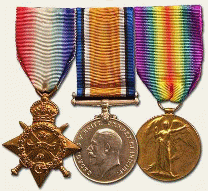
Figure 11. The 1914-15 Star, British War Medal
and Victory Medal.
(Image from the author’s collection)
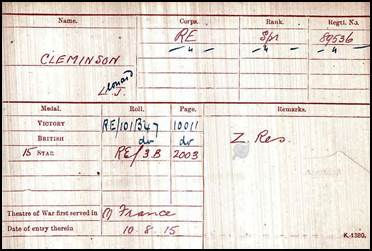
Figure 12. Cleminson’s Medal Index
Card.
(Image courtesy of Ancestry.com)
8. RELEASE FROM SERVICE
Lance Corporal Cleminson was released from service on 2 August 1919. His total service was reckoned as shown in the tables below:
Location |
|
Chatham, Kent |
7 April 1915 – 8 August 1915 |
France |
9 August 1915 – 4 October 1915 |
Bangour, Scotland |
5 October 1915 – 4 December 1915 |
Newark, Nottinghamshire |
5 December 1915 - 17 February 1916 |
Alexandria, Egypt |
18 February 1916 – 5 July 1919 |
Purfleet, Essex |
6 July 1919 – 2 August 1919 |
Location |
|
Home Service |
335 days |
Service Abroad |
3 years, 3 months and 57 days |
Total Service |
4 years, 3 months and 27 days |
Marriage
Leonard James Cleminson married Ada Aderline Soar (1893-1993)[10] in West Ham, Essex on 16 August 1919. Leonard and Ada had three children: Gladys Laura Cleminson (1920-2013), Joyce Aderline Cleminson (1922-2004) and Kenneth Leonard Cleminson (1924-2014).
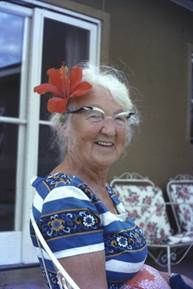
Figure 13. Ada Aderline Cleminson.
(Image courtesy
of David Jeremy Cleminson)
Children
Gladys Laura Cleminson
Gladys was born in Stratford, West Ham, London on 1 June 1920. She married George Henry Shaw (1918-1996) in Brixworth, Northamptonshire in 1947. They had five daughters and one son. Gladys Laura Shaw, died in Northampton, Northamptonshire on 4 August 2013 at the age of 93. Her husband George had predeceased her in Northampton at the age of 78.
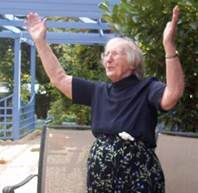
Figure 14. Gladys Laura Shaw.
(Image
courtesy of Sara Baguley)
Joyce Aderline Cleminson
Joyce was born in Greater London in July 1922. She married Ronald Austin Grant (1920-2003) in Caserta, Italy on 1 September 1945. Joyce and Ronald had four children, three boys and a girl. Joyce died in Hastings and Rother, East Sussex in April 2004 at the age of 82. Ronald had predeceased her in Hasting and Rother in May 2003.
Kenneth Leonard Cleminson
Kenneth was born in Stratford, Essex in June 1924.[11] He married Elaine May Cleminson and they had two children, Hilary Jane and David Jeremy. Leonard died in Peterborough on 30 January 2014 at 89 years of age.
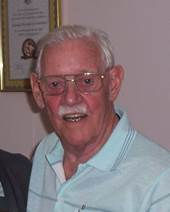
Figure 15. Kenneth Leonard Cleminson.
(Image
courtesy of David Jeremy Cleminson)
Parents
Leonard’s mother, Laura Jane Cleminson, died in West Ham, Essex on 19 April 1915, only 12 days after Leonard joined the Army and while he was at the School of Military Engineering in Chatham. His father, James Cleminson, lived the remainder of his life in Stratford and died there on 26 July 1938.
Siblings
Sisters
Florence Lillian Cleminson was born in Stratford, Greater London in 1899. She married Wilfred Russell and they had four children. Florence died in London on 3 May 1935. Her address at the time of her death was 71 Overton Drive, Wanstead, London.
Leonard’s other sister, Dorothy May, married Stanley Charles Smith and had one child. She died in Redbridge in the Greater London area on 3 May 1969.
Brother
Leonard’s brother, Albert Edward, enlisted in the Army Cyclist Corps at Stratford on 9 December 1915 while Leonard was convalescing from his wound after being discharged from the Edinburgh War Hospital. Leonard and Albert probably had some time together before Albert was mobilized and Leonard was shipped to Egypt. Unfortunately, it would be the last time that they would see each other.
Albert was living at his father’s home at 64 Chobham Road in Stratford when he enlisted in the Army Cyclist Corps. He declared his age to be 21 years and indicated that he was working as a Clerk. It is most likely that he was employed by his father’s firm. Albert told the Recruiting Officer that he was not married, he had no prior naval or military service, he was willing to be re-vaccinated and that he would enlist for General Service for the duration of the war. He declared his father to be his next of kin and his religion as Church of England. This is interesting since Leonard had declared his religion to be Wesleyan and one wonders to which religious denomination the family belonged.
Albert was given a cursory medical examination on the day of his enlistment. The examination indicated that he was 5 feet 6 inches tall and that his chest (expanded) measured 33½ inches with a range of expansion of 3 inches. The examining officer also noted that as a distinctive mark, he had a small mole near his navel. On the day following his enlistment, Leonard was posted to the Army Reserve.
On 5 January 1916 Albert was called up for service with the Army Cyclist Corps at Chisledon in Wiltshire. He probably served in the 5th (Cyclist) Battalion, as this was the battalion associated with the East Yorkshire Regiment, the regiment that he would ultimately join when he went to France.
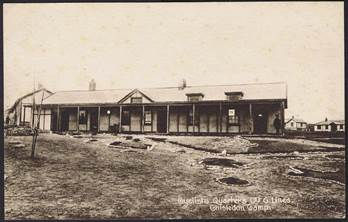
Figure 16. Army Cyclist Corps Headquarters in
Chisledon, Wiltshire.
(Image courtesy of Mulready
Philatelics Company)
At Chisledon Albert was given another medical examination on 5 January, this one more rigorous than the examination he received when he enlisted. In addition to the information recorded in that first examination, his weight was listed as 112 pounds and his physical development was noted to be fair. The vision in both of his eyes was 6/9 using the Snellen Visual Acuity Test. It also was noted that he had a small bunion on his left foot, but this was listed as a “slight defect” that would not affect his performance as a soldier.
On 19 January 1916 Albert was given his first T.A.B. vaccination. The T.A.B. vaccine was a combined vaccine used to produce immunity against the diseases typhoid, paratyphoid A and paratyphoid B. He received the second T.A.B. vaccine on 29 January and a smallpox vaccination on 21 March.
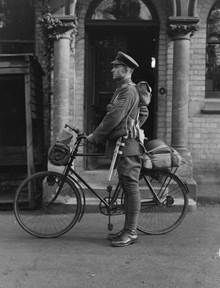
Figure 17. A Sergeant in the Army Cyclist
Corps.
(Image courtesy of the
Imperial War Museum)
Albert was transferred from the Army Cyclist Corps to the East Yorkshire Regiment on 23 November 1916. At that time he was qualified as a “Bomber,” that is, a man trained to throw hand grenades or “hand bombs” into enemy trenches. He was posted to the 12th Battalion of the regiment on 11 December 1916 and embarked for France on that same date. On 18 December 1916 he was transferred to the 11th (Service) Battalion (2nd Hull),[12] joining that battalion on the following day. The battalion was part of the 92nd Brigade of the 31st Division already in France.
When Private Cleminson joined the battalion the Germans had already begun their retreat to the Hindenburg Line. On 8 April 1917 the 92nd Brigade left the Ancre River area and moved to the Arras sector where the Battle of Arras began the next day. After a period of training and trench-holding, the brigade moved into assembly trenches opposite Oppy during the night of 2/3 May, under shellfire. The British creeping barrage started at 3:45 am and the brigade set off in four waves, in the dark and mist, into severe machine gun fire. The 10th Battalion found that in many places the wire had not been cut and had to funnel through the few gaps. This slowed the attack, which fell behind the barrage. All four company commanders were wounded, and the attack became disorganized. It was later discovered that a number of the 10th Battalion's men were captured after getting through the German trenches into Oppy village. The rest of the battalion remained pinned down in No Man's Land all day, having lost over 100 men. Similarly, the 11th Battalion was hit by machine guns firing from Oppy Wood and pinned down. The officers, including 2nd Lieutenant Jack Harrison, reorganized their men for a second attempt. This too failed, but Harrison dashed on alone to try to silence the machine gun that was holding up his men. He was killed and later awarded a posthumous Victoria Cross. The 11th Battalion lost 63 men killed. The 12th Battalion’s attack also failed, suffering 83 killed. The three attacking battalions withdrew from No Man's Land to their own trenches after dark, where they were relieved by the Accrington Pals while the 13th East Yorks brought in the dead and wounded from the battlefield. Private Albert Edward Cleminson was one of the 11th Battalion’s 63 who were killed in this action and his body was not recovered. He was reported as missing in action. I
t was not until 7 June 1918 that the War Office officially listed him as killed in action.
For his service during the war Albert’s family received his British War Medal and Victory Medal. They also received a Memorial Plaque to commemorate his death. His Medal Index Card shows his entitlement to the two medals, but little else. The theatre of war that he served in and the date that he went there are not shown on the card, nor is the fact that he was killed.
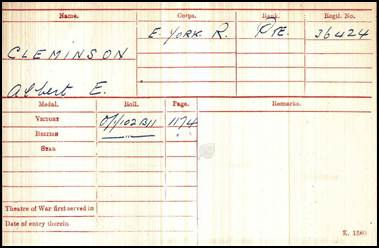
Figure 18 The Medal Index Card of Private Albert
Edward Cleminson.
(Image courtesy of Ancestry.com)
10. POST SERVICE LIFE OF LEONARD JAMES CLEMINSON
On 3 August 1919, a medical board concluded that Leonard James Cleminson’s deafness in his left ear would result in a 10% disability, but no disability bonus was awarded to him. It is likely that he returned to Stratford to work again in his father’s business. James Cleminson died in 1938, but there was no information found regarding the date of death of Richard Cleminson, the co-owner of J&R Home Repair and Decorating. Perhaps Leonard stayed with the firm long enough to become a partner or its owner.
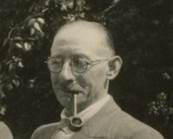
Figure 19. Leonard James Cleminson in Later Years.
(Image courtesy of the Cleminson family tree)
At some point Leonard and Ada Cleminson moved to Northamptonshire where they resided at 40A High Street in Kingsthorpe.
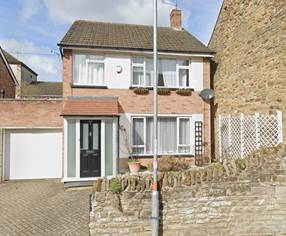
Figure 20. 40A High Street, Kingsthorpe, Northamptonshire.
(Image courtesy of Google Earth)
Leonard died on 14 January 1986 at the age of 93. Probate of his Will took place in Oxford on 29 January 1986 with no heir specified and his effects valued at not exceeding £40,000. As his wife Ada did not die until 1993, it must be assumed that she was his heir.
11. Cleminson Family Photographs
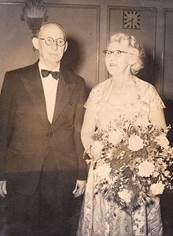
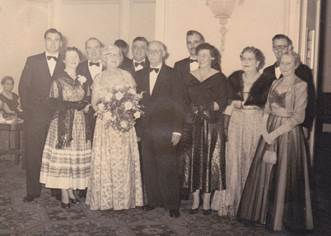
Figures 21 and 22. Leonard, Ada, Family and Friends, Possibly at a Wedding Anniversary Party.
(Images courtesy of David Jeremy Cleminson)
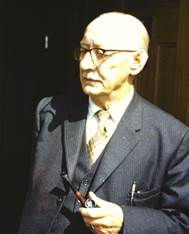
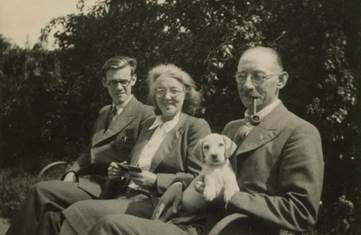
Figures 23 and 24. Leonard and Ada with a Pet and an Unknown Individual.
(Images courtesy of David Jeremy Cleminson)
NOTES:
(1) The young man in Figure 23 may be their son, Kenneth Leonard Cleminson.
(2) In Figure 24 there appears to be a slight trace of a scar on Leonard’s left cheek, a scar left by his war wound.
Books
De Ruvigny’s Roll of Honour 1914-1919. Standard Art Book Company, London.
Census
1901 Census of England (RG 13 / 1593) – 31 March 1901.
1911 Census of England and Wales – 2 April 1911.
Civil Documents
Probate Calendar, 1986, p. 1603.
Data Bases
Soldiers Died in the Great War, 1914-1919. The Naval and Military Press Ltd., Dallington, East Sussex, 1998.
Family Trees
Leonard James Cleminson (by twomacks133).
James Cleminson (father) (by twomacks133).
Laura Jane Pannifer (mother) (by twomacks133).
Ada Aderline (or Adeline) Soar (wife) (by twomacks133).
Joyce Adeline Cleminson (daughter) (by lsgrant2000).
Kenneth Leonard Cleminson (son) (by Pauline Wallace).
Kenneth Leonard Cleminson (son) (by David Jeremy Cleminson).
Medal Rolls
Royal Engineers Medal Roll, 1914-15 Star.
Royal Engineers Medal Roll, British War Medal and Victory Medal.
Military Documents
War Diary of the 138th Army Troops Company, pp. 1-5.
Military Service Papers
89536 Sapper Leonard James Cleminson, Royal Engineers
a. Medal Index Card.
b. Short Service Attestation.
c. Statement of Services (Army Form B. 200A).
d. Medical History.
e. Extract from Army Form B. 103.
f. Protection Certificate and Certificate of Identity (Army Form E. 11).
g. Casualty Form – Active Service (Army Form B. 103).
h. Letter from J.& R. Cleminson to the Recruiting Officer, Stratford, Essex, dated 7 April 1916, Re: Leonard James Cleminson’s work history.
i. Royal Engineers Trades Pay Form.
j. Trade and Special Qualifications Form.
k. Statement as to Disability.
l. Disability Award Sheet – First Award.
m. Medical Report on a Soldier Boarded Prior to Discharge.
n. Opinion of Medical Board.
o. Report of Medical Specialist.
p. Regimental Conduct Sheet (Army Form B. 120).
q. Squadron, Troop, Battery and Company Conduct Sheet (Army Form B. 121).
r. Particulars of a Claim made on Army Form Z. 22.
36424 Private Edward Albert Cleminson, East Yorkshire Regiment.
a. Short Service Attestation.
b. Descriptive Report on Enlistment.
c. Casualty Form – Active Service.
d. Allotment of Pay (Army Form B. 104).
e. Father’s Letter to Paymaster, East Yorkshire Regiment, dated 24 May 1919, Re: War Gratuity.
f. Memorandum from the War Office to the East Yorkshire Regiment, dated 11 September 1918, Re: Articles of Personal Property of Albert E. Cleminson.
g. Medical History.
h. Record of Vaccinations.
i. Memorandum from the War Office to the O.I.C. No. 1 Infantry Record Office, dated 7 June 1918, Re: 36424 Private Cleminson, A.E., from Missing to Dead.
j. Names of Living Relatives (Army Form W. 5080).
k. Statement of Service.
l. Medal Index Card.
m. Commonwealth War Graves Commission Commemoration.
Web Sites
British Base Hospitals in France.
https://www.longlongtrail.co.uk/army/regiments-and-corps/british-base-hospitals-in-france/
Commonwealth War Graves Commission.
Wikipedia: Bangour War Hospital, 1914-1918.
Wikipedia: S.S. Dieppe.
https://en.wikipedia.org/wiki/SS_Dieppe_(1905)
A short history of 13 Field Survey Squadron Royal Engineers. Programme for the 150th Anniversary of 13 Field Survey Squadron.
http://www.militarysurvey.org.uk/Historic%20Archive/Units/13/A%20Short%20history%20of%2013.htm
Wikipedia: Battle of Loos.
https://en.wikipedia.org/wiki/Battle_of_Loos
Wikipedia: Hull Pals.
https://en.wikipedia.org/wiki/Hull_Pals
Geni Web Site by David Jeremy Cleminson
https://www.geni.com/people/James-Cleminson/5583417862580039676
ENDNOTES
[1] Medal Index Card. Cleminson’s permanent rank was Sapper, but he is an Acting Lance Corporal in the photograph.
[2] M.I.C.. Shelley’s permanent rank was Driver. He is an Acting Lance Corporal in the photograph. A separate study will be written of his life and military service.
[3] He was appointed an Acting Lance Corporal for the first time on the date shown.
[4] Cleminson family trees from Ancestry.com. The family trees referred to the home of the Cleminson family as Stratford, Essex; however, it really was in a part of London. Stratford is a town in east London, within the ceremonial county of Greater London. Until 1965 it was within the historic county of Essex. Part of the Lower Lea Valley, Stratford is situated 6 miles east-northeast of Charing Cross and includes the localities of Maryland and East Village
[5] West Ham also is an area in East London, located 6.1 mi east of Charing Cross in the west of the modern London Borough of Newham.
[6] Major John Palgrave Heathcote Ouchterlony, DSO, R.E. was killed in action near Ypres on 7 June 1917.
[7] S.S. Northwestern Miller was a cargo ship that had been launched on 19 October 1914 by the Northumberland Shipbuilding Company Ltd. It was owned by the Norfolk & North American Steam Shipping Company Ltd out of Liverpool. The ship was sold to Germany in 1927 as the Augsburg and in 1941 it was owned by a company in Japan and renamed Teiryu Maru. The ship was torpedoed and sunk on 19 July 1944 by the U.S. submarine Guardfish.
[8] Wikipedia: Battle of Loos.
[9] Dieppe was built for the London, Brighton and South Coast Railway. She was used on their Newhaven — Dieppe route. She was requisitioned by the Royal Navy in the First World War for use as a troopship and a hospital ship. On 27 February 1916 she took aboard over 100 survivors from the P&O passenger liner Maloja, which was sunk by a mine off Dover.
[10] In some Cleminson family trees Ada’s middle name is spelled Adeline.
[11] This date was provided on Kenneth Leonard Cleminson’s family tree page by Pauline Wallace. David Jeremy Cleminson gives Kenneth’s date of birth as 23 May 1924.
[12] On 10 December 1915 the formation of the Fifth New Army (K5) was authorized: the four Hull battalions were to form 113th Brigade of 38th Division. The four battalions of Hull Pals also received their formal titles at this time:[
10th (Service) Battalion, East Yorkshire Regiment (1st Hull)
11th (Service) Battalion, East Yorkshire Regiment (2nd Hull)
12th (Service) Battalion, East Yorkshire Regiment (3rd Hull)
13th (Service) Battalion, East Yorkshire Regiment (4th Hull)